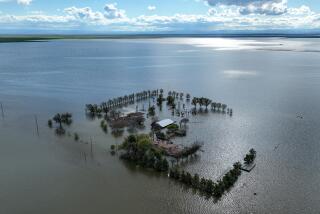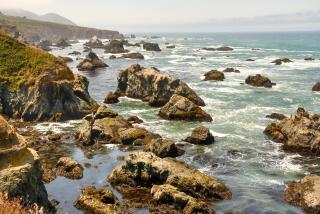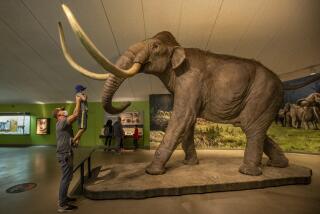Ancient eruptions of carbon dioxide traced to oceans
The oceans burped ... twice.
About 13,000 and 18,000 years ago, carbon dioxide poured into the atmosphere in two giant belches that drove concentrations of the greenhouse gas from 180 to 265 parts per million, where it held relatively steady until the Industrial Revolution.
Scientists have long known about the jump in gas levels from looking at ice cores. They suspected the carbon dioxide originated in a deep, carbon-rich reservoir in the oceans but had no way to explain how the gas could accumulate and then be released so suddenly.
Reporting in the journal Science today, researchers said they found the answer in a sample of sediment drilled in the Pacific Ocean.
“This new study nails it,” said J.R. Toggweiler, an oceanographer at the National Oceanographic and Atmospheric Administration, who was not involved in the study. “If there were any doubters, I don’t think they have a leg to stand on.”
The researchers first correlated the bands of sediments in the core drilled off Baja to the Greenland ice cores. That allowed them to create a matching timeline over the last 38,000 years.
Embedded in the 50-foot-long Baja core were shells left by bottom-dwelling microorganisms. The researchers analyzed the shells to determine the ratio of two isotopes, carbon-12 and carbon-14.
Carbon-14 is produced by cosmic rays in the atmosphere. Thus, water that stays deep in the oceans for thousands of years contains relatively little carbon-14 and lots of carbon-12.
The researchers found two periods that stood out for low carbon-14 levels.
The levels meant that the water during those periods was barely circulating to the surface. Carbon from decaying organic material was accumulating in the deep. The old water eventually rose to the surface, releasing its carbon dioxide in an enormous burp.
Each of the gas releases was recorded in the Greenland ice cores.
Thomas Marchitto, a marine geologist at the University of Colorado at Boulder and a lead author of the new study, said matching the rise of old water to the atmospheric changes provides strong evidence that the gas came from the ocean.
The burps injected 700 gigatons of carbon dioxide into the atmosphere as Earth was already emerging from an ice age. What started the warming is unknown, but scientists said the release of the gas accelerated it.
Over a 10,000-year span, global temperatures rose by more than 7 degrees Fahrenheit.
Since the Industrial Revolution began in the mid-18th century, the burning of fossil fuels has added 250 gigatons of carbon dioxide to the atmosphere, raising the carbon dioxide concentration to 385 parts per million and spurring a temperature increase of nearly 2 degrees.
Current emissions are 7 gigatons a year. About half of that is absorbed by oceans.
One mystery about the burps remains: Where did they originate? The sediment sample from Baja was merely a trace left as the old water passed by on its way to the surface. “We still need to find the original reservoir,” Marchitto said.
*







